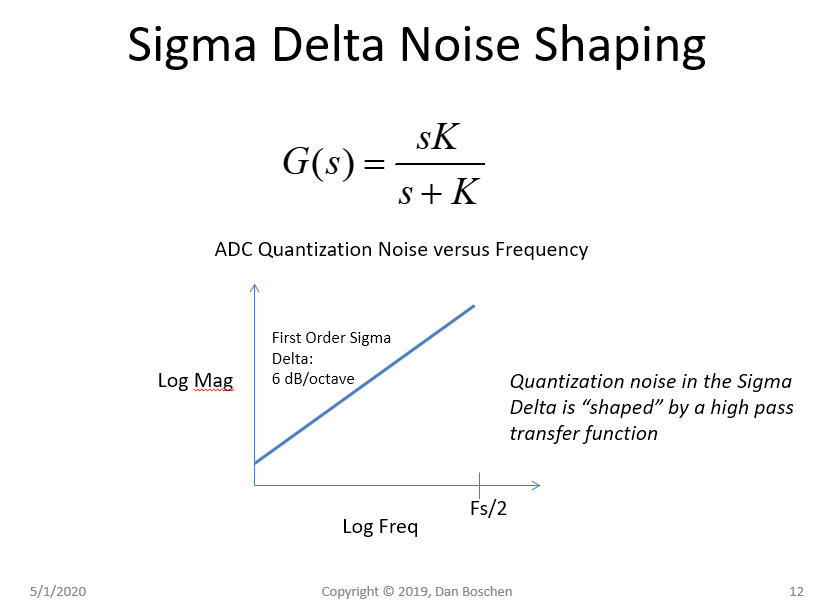A little background:
This question is about viewing the output spectrum of incremental delta sigma modulators (IDSM). IDSM is a subcategory of general delta sigma modulators where the integrators are reset for every conversion cycle with the advantage of being multiplexable along several channels. (https://pdfs.semanticscholar.org/1f62/af5ec0ba627e8ef5ebf81a479307b059a116.pdf).
I am aware that a general sigma-delta noise shaping architecture has a noise shaping characteristic of a differentiator as shown below:
1,2 and 3 indicate the orders of noise shaping and sigma delta architectures too.
For example, if we consider the following continuous-time sigma-delta architecture (first order), the noise shaping is governed by the equation:
 NTF(z)=(1-z^(-1)), which translates to the curve (1) of the first figure.
NTF(z)=(1-z^(-1)), which translates to the curve (1) of the first figure.
Simulation background for IDSM:
When I simulate an incremental sigma delta converter (IDSM), I run it for (N*(1/fs)*OSR), where it runs for OSR clock cyles for single conversion. I run the output through the counter and then scale it by (1/M) for every reset (Decimation) and then view the spectrum with N points, I am able to get the desired output SNR for an IDSM.
One conversion cycle is shown below (M=OSR).
Core question:
I designed a continuous-time first-order sigma delta modulator in matlab and the output spectrum is shown below:

Here I am able to see the first order noise shaping (-20dB/decade noise increment).
Now, how do I simulate the output from an IDSM to view the result of noise shaping?.
I saw some articles, plotting noise shaped spectrum for IDSM (in free running DSM mode). I am really not sure how to run an IDSM in this mode, because logically it would require a reset for each conversion and therefore I am stuck.
(Again, I could decimate the output of IDSM and then view the spectrum - which gives me the correct SNR. But I'm interested in viewing the noise shaping behavior.)
If what i am expecting is not achievable, please let me know as well - that would be helpful too.




